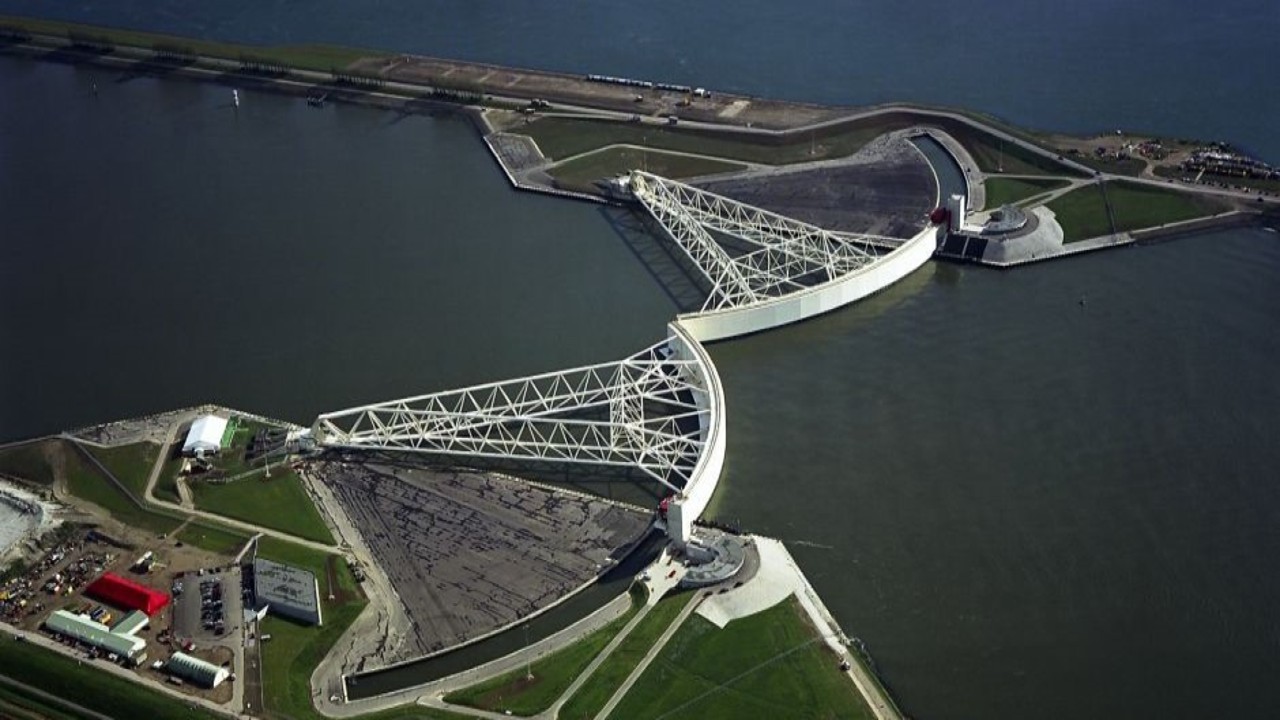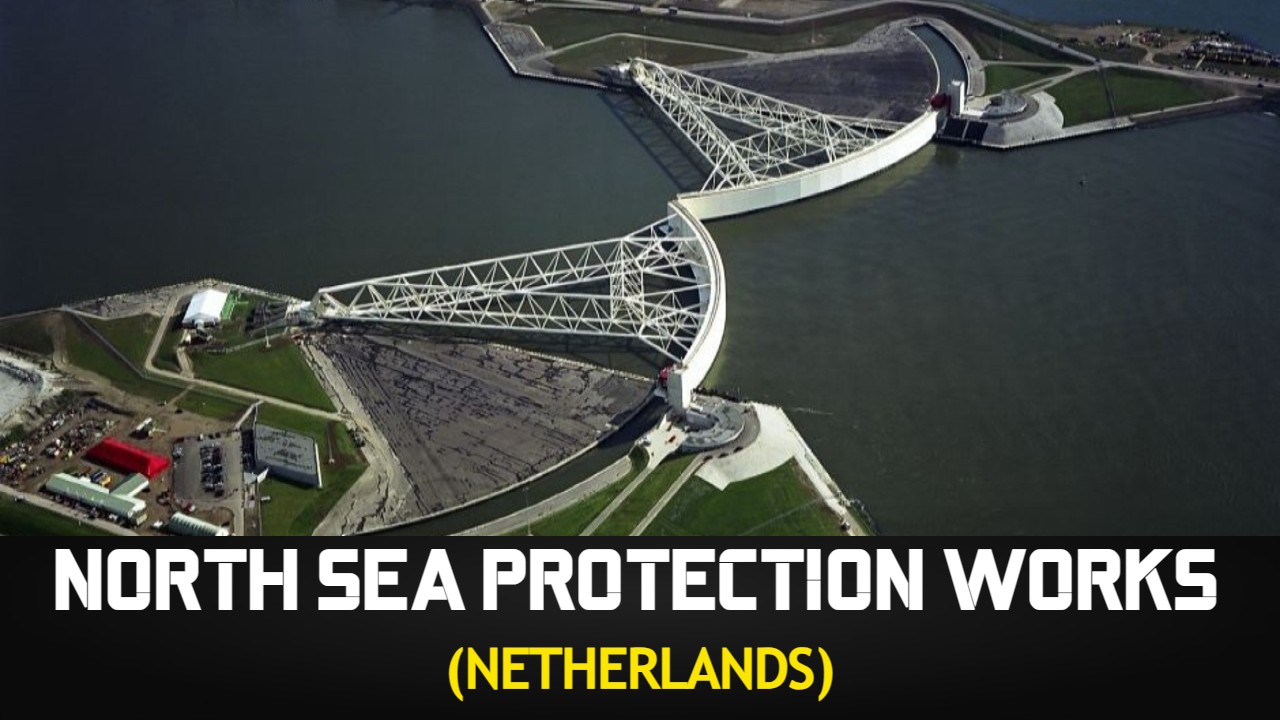North Sea Protection Works: The Netherlands, a little nation tucked away in northwest Europe, is well known for its ingenious and all-encompassing strategy for coastline conservation. The Dutch have faced the ongoing difficulty of protecting their country from the ever-present threat of flooding from the North Sea since a sizeable percentage of their territory is below sea level. This article explores the extraordinary North Sea conservation initiatives made by the Netherlands, showcasing their heritage, engineering prowess, and environmentally friendly methods.

Contents
- 1 The Threat of Flooding in the Netherlands
- 2 History of Dutch Coastal Protection
- 3 The Future of North Sea Protection Works
- 4 Delta Works: An Engineering Marvel
- 5 Barrier Islands and Dunes
- 6 Coastal Reinforcements and Dike Systems
- 7 Storm Surge Barriers
- 8 Sustainable Approaches to Coastal Protection
- 9 Economic Impact and International Collaboration
- 10 Monitoring and Maintenance
- 11 Conclusion
- 12 Frequently Asked Questions – FAQs
- 12.1 How does the Dutch coastal protection system work?
- 12.2 Are the Dutch coastal protection works sustainable?
- 12.3 What are the economic benefits of Dutch coastal protection?
- 12.4 How do the Delta Works contribute to coastal protection?
- 12.5 What international collaborations does the Netherlands engage in for coastal protection?
- 12.6 Are the North Sea Protection Works effective against all types of flooding?
- 12.7 How often are the dikes and storm surge barriers inspected?
- 12.8 What is the economic cost of maintaining the North Sea Protection Works?
- 12.9 Do the North Sea Protection Works have any negative impacts on marine life?
- 12.10 How is climate change influencing the future of coastal protection in the Netherlands?
The Threat of Flooding in the Netherlands
Due to its position, the Netherlands is susceptible to the unrelenting forces of the North Sea. The likelihood of flooding increases as a result of increased sea level rise, climate change, and frequent extreme weather events. Loss of life, harm to the infrastructure, and negative ecological repercussions are all possible outcomes. The Dutch have committed themselves to creating a strong coastline protection system after realising these threats.
History of Dutch Coastal Protection
The Netherlands has fought the sea for generations. The Dutch have been building embankments, dikes and drainage systems to recover land from the sea since the Middle Ages. Water boards, regional municipal agencies in charge of managing water, were created as a result of the ongoing fight to manage water. These initiatives eventually developed into significant initiatives with a national security focus.
Also Read: Steel Beam Retaining Wall: A Sturdy Solution for Structural Stability
The Future of North Sea Protection Works
The Dutch are continually modifying and developing their coastline preservation techniques as a result of the new problems that climate change continues to present. Additional expenditures in infrastructure, research, and technology developments are required due to rising sea levels and more severe weather patterns. In order to address common coastal protection problems, international collaboration, adaptive management, and sustainable solutions are key components of the future of North Sea Protection Works.
Delta Works: An Engineering Marvel
The Delta Works is among the most recognisable images of Dutch coastal defence. An sophisticated network of dams, sluices, and storm surge barriers makes up this enormous undertaking, which was started in the wake of the 1953 North Sea disaster that caused so much destruction. The Zeeland region in the southwest of the Netherlands, where the Delta Works are in place, effectively reduces the risk of floods. The Oosterscheldekering, a magnificent storm surge barrier that protects and maintains the Eastern Scheldt’s delicate biological balance, is the pride of the Delta Works.
Barrier Islands and Dunes
Natural barrier islands and dunes along the Dutch coast are essential in reducing the effects of storm surges. These dynamic structures serve as tidal barriers by absorbing wave energy and shielding the mainland. In order to maintain the efficiency of these coastal features as natural flood defences, the Dutch government actively administers them by replenishing beaches and fortifying dunes.
Source: Real Engineering
Coastal Reinforcements and Dike Systems
The Dutch have cleverly built a vast network of coastal fortifications and dikes to protect vulnerable areas from the North Sea’s might. These systems come in a variety of designs and construction types, from towering concrete buildings to embankments covered in grass. against ensure these dikes’ structural integrity and resistance against future breaches, continual monitoring and upkeep are necessary.
Storm Surge Barriers
The Netherlands has put in place a number of additional important storm surge barriers in addition to the Delta Works. These amazing technical achievements are carefully positioned at crucial points along the shoreline to offer protection during severe weather occurrences. A few of examples include the Maeslantkering near Rotterdam and the 32-kilometer-long Afsluitdijk, which connects the Dutch provinces of North Holland and Friesland.
Sustainable Approaches to Coastal Protection
The Dutch are committed to sustainability, and this includes protecting their coastlines. They support the development of tidal wetlands and salt marshes, which act as natural barriers against storm surges and promote biodiversity. Additionally, cutting-edge methods like sand nourishment, which replenishes sand on eroding beaches, help to maintain natural ecosystems while ensuring the long-term stability of the shoreline – North Sea Protection Works
Economic Impact and International Collaboration
North Sea Protection Works – In addition to ensuring the safety of its population, the Netherlands’ experience in coastal preservation has also opened up chances for economic growth. Engineering and water management-focused Dutch businesses are well-known abroad and export their know-how to other countries. The Netherlands also actively cooperates with other nations suffering comparable difficulties, exchanging experiences and cooperating to counter the threat posed by increasing sea levels.
Monitoring and Maintenance
The North Sea Protection Works are subject to a rigorous monitoring and maintenance schedule to guarantee their performance. Real-time monitoring of water levels, wave heights, and the structural soundness of barriers and dikes is now possible thanks to technological improvements. To address any possible weaknesses, routine inspections and timely fixes are performed. This proactive strategy guarantees that the coastal defences continue to be strong against the constantly shifting natural forces.
Conclusion
North Sea Protection Works – The Dutch efforts to safeguard the North Sea are evidence of human ingenuity and fortitude in the face of the forces of nature. The Dutch have created a model coastline protection system by combining old customs, innovative engineering work, and environmentally friendly practises. Their initiatives serve as an example for nations throughout the globe that are coping with the impending problems of climate change and increasing sea levels.
Frequently Asked Questions – FAQs
How does the Dutch coastal protection system work?
The Dutch coastal protection system comprises a combination of dikes, storm surge barriers, natural buffers, and sustainable measures to prevent flooding from the North Sea.
Are the Dutch coastal protection works sustainable?
Yes, the Netherlands employs nature-based solutions, sand nourishment, and collaborations for sustainable coastal protection.
What are the economic benefits of Dutch coastal protection?
Dutch expertise in coastal protection has led to economic growth, as their water management companies export knowledge and technology worldwide.
How do the Delta Works contribute to coastal protection?
The Delta Works, including the Oosterscheldekering, form an intricate system of dams and barriers that minimize the risk of flooding in Zeeland.
What international collaborations does the Netherlands engage in for coastal protection?
The Netherlands actively collaborates with other countries, sharing experiences and knowledge to combat the threat of rising sea levels.
Are the North Sea Protection Works effective against all types of flooding?
The North Sea Protection Works are designed to provide effective protection against most types of flooding, including storm surges and high tides. However, extreme and unprecedented weather events may pose challenges that require additional measures.
How often are the dikes and storm surge barriers inspected?
Dikes and storm surge barriers are regularly inspected and undergo maintenance as needed. The frequency of inspections varies depending on the specific location and the level of risk.
What is the economic cost of maintaining the North Sea Protection Works?
The maintenance and upkeep of the North Sea Protection Works require significant financial investment. However, the economic benefits of protecting valuable land and infrastructure far outweigh the costs.
Do the North Sea Protection Works have any negative impacts on marine life?
While the construction and operation of the protection works may have localized impacts on marine life, efforts are made to minimize disruption and protect the surrounding ecosystems. Environmental assessments are conducted before undertaking any major projects – North Sea Protection Works
How is climate change influencing the future of coastal protection in the Netherlands?
Climate change presents new challenges for coastal protection. Rising sea levels and more frequent extreme weather events require ongoing adaptation, research, and innovation to ensure the effectiveness of the North Sea Protection Works.






